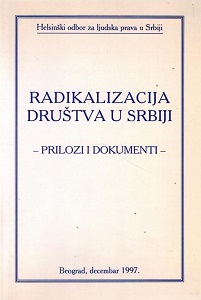
We kindly inform you that, as long as the subject affiliation of our 300.000+ articles is in progress, you might get unsufficient or no results on your third level or second level search. In this case, please broaden your search criteria.

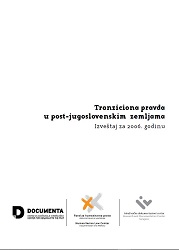
In the armed conflicts in Croatia (1991-95), Bosnia and Herzegovina (1992-95), and Kosovo (1998-99), at least 130,000 people lost their lives, millions were forced to flee their homes, and hundreds of thousands of houses were destroyed. The transition from a state of armed conflict and state repression to a period of peace and the building of democratic institutions requires these societies to decide on mass human rights violations from the recent past. The set of measures taken by the authorities and civil society to address these violations of rights constitutes a complex of transitional justice, the basic elements of which are fact-finding, trials, reparations, and institutional reform (lustration). This report deals with the consequences of the war and the crimes committed between 1991 and 1999. The report was initiated by the Humanitarian Law Center (HLC), in cooperation with the Research and Documentation Center (IDC-BiH) and Document (Croatia). It refers to Bosnia and Herzegovina, Croatia, Serbia, Kosovo, and Montenegro - hereinafter referred to as "post-Yugoslav countries".
More...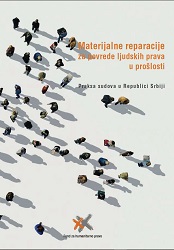
Reparations are measures applied by post-conflict societies to redress various types of damage suffered by victims as a result of certain crimes committed by the previous government and its institutions. The goal of reparations is justice for the victims. For a large number of victims, reparations are the most tangible manifestation of society's efforts to repair the damage they have suffered. Reparations are divided into material and symbolic. They can be individual or collective. They are realized directly on the basis of law (administratively) or through the courts. In this report, we talk about obtaining material reparations through the courts, reviewing legal regulations and the conduct of courts in cases initiated by the Humanitarian Law Center (HLC).
More...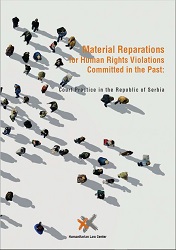
Reparations are measures applied by post-conflict societies to redress various types of damage suffered by victims as a result of certain crimes committed by the previous government and its institutions. The goal of reparations is justice for the victims. For a large number of victims, reparations are the most tangible manifestation of society's efforts to repair the damage they have suffered. Reparations are divided into material and symbolic. They can be individual or collective. They are realized directly on the basis of law (administratively) or through the courts. In this report, we talk about obtaining material reparations through the courts, reviewing legal regulations and the conduct of courts in cases initiated by the Humanitarian Law Center (HLC).
More...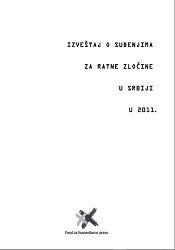
In 2011, the War Crimes Prosecutor's Office of the Republic of Serbia (TRZ) filed indictments against a total of nine persons, all for the criminal offense of War Crimes against Civilians under Art. 142 paragraph 1 of the FRY CC. // In 2011, 13 proceedings were conducted before the War Crimes Chamber of the High Court in Belgrade. Of these, the War Crimes Chamber handed down verdicts in six cases, convicting 17 defendants and acquitting two of them, and the remaining seven proceedings are still pending. // In 2011, the War Crimes Chamber of the Court of Appeals in Belgrade issued 11 decisions on appeals against the verdicts of the War Crimes Chamber of the Belgrade High Court, which convicted 12 defendants and overturned the first instance verdicts and returned the cases. on retrial. // In 2011, before the courts of general jurisdiction, two proceedings were conducted for the criminal offense of War Crimes against Civilians under Article 142, Paragraph 1 of the FRY Criminal Code - Kushnin / Kushnin case before the Higher Court in Nis, Orahovac / Rahovec case before The High Court in Pozarevac, and two proceedings for ethnically motivated murders. The case of Oto Palinkaš et al. Was conducted before the High Court in Kraljevo, and the case for ethnically motivated murder in the Emini case was conducted before the High Court in Niš. // Humanitarian Law Center (HLC), in 2011 represented the victims in four cases before the War Crimes Chamber of the High Court in Belgrade - Ćuška / Qushk, Skočić, Zvornik III / IV and Lovas, while HLC observers monitored the main hearings in other proceedings before this court, as well as the main trial in the Kushnin case.
More...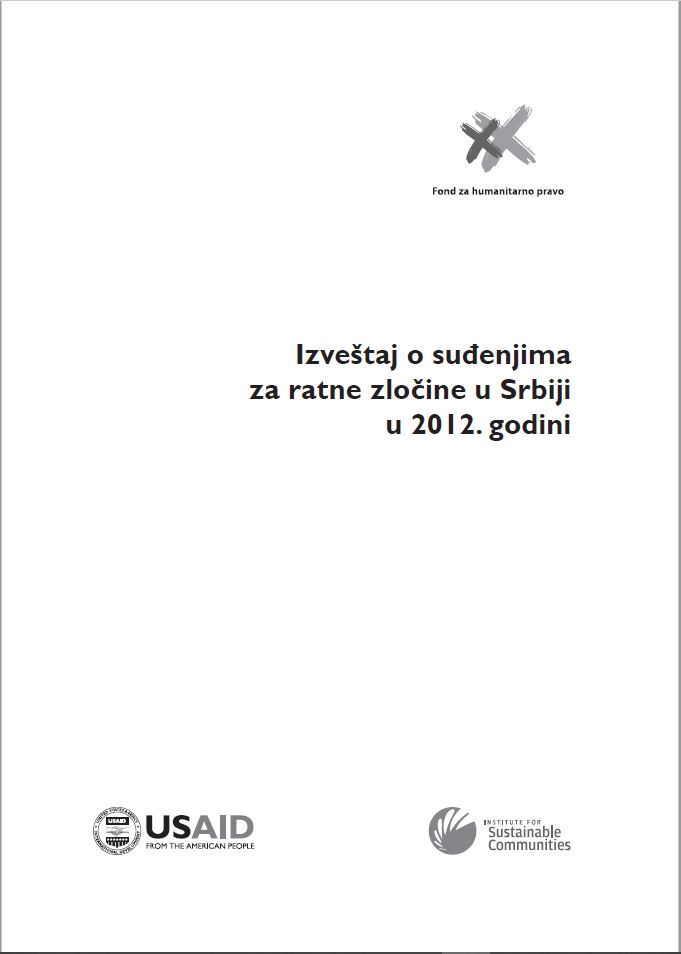
In 2012, 13 proceedings were conducted before the High Court in Belgrade (War Crimes Chamber). The High Court handed down verdicts in seven cases1 in which 37 defendants were convicted and eight defendants acquitted, while the remaining six proceedings are still pending. // In 2012, the Court of Appeals in Belgrade (War Crimes Chamber) rendered four decisions on appeals against the judgments of the Belgrade High Court and the Belgrade Court of Appeals, which convicted four defendants3 and acquitted two defendants. // In 2012, two war crimes proceedings against civilians were conducted before courts of general jurisdiction - the Orahovac/Rahovec case before the Požarevac High Court and the Kushnin case before the Niš High Court. The procedure against Miloš Lukić for the crime of murder is underway before the High Court in Prokuplje. // In 2012, the OWCP filed indictments against a total of seven persons for the criminal offense of War Crimes against Civilians and / or for the criminal offense of War Crimes against Prisoners of War. In 2012, the HLC represented the victims in four cases before the War Crimes Chamber of the Belgrade High Court - Ćuška / Qushk, Skočić, Lovas and Tenja II, while HLC observers monitored the main hearings in other proceedings before this court, as well as main hearings in cases before the courts of general jurisdiction - Rahovec / Orahovac, Kušnin/Kushnin i Miloš Lukić.
More...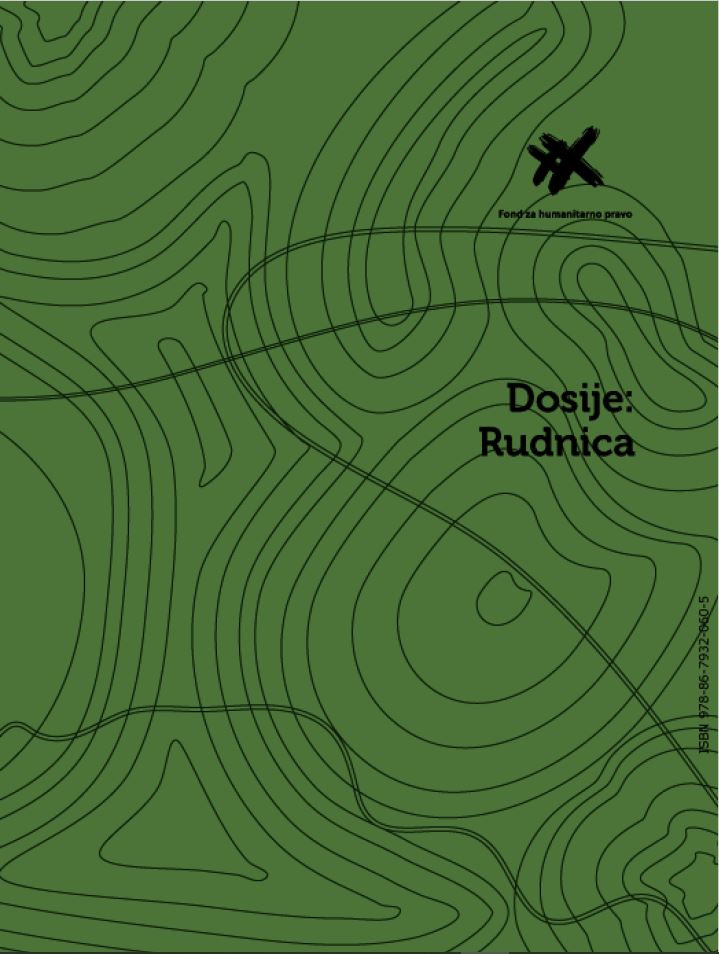
The mass grave in Rudnica is the first mass grave in Serbia to be discovered since the end of the ICTY's mandate to investigate crimes in the former Yugoslavia. Three mass graves with the bodies of 889 Kosovo Albanians, mostly civilians, were discovered in the spring of 2001 at three locations in Serbia - in the Belgrade suburb of Batajnica, in Petrovo Selo (eastern Serbia) and near Lake Perucac (western Serbia). In the Sainovic et al. and Djordjevic cases, the ICTY established facts about the circumstances of the killings of most civilians whose remains were exhumed from these three locations. According to ICTY verdicts, these crimes were committed as part of a joint criminal enterprise aimed at establishing effective control of the Serbian authorities over Kosovo by changing the ethnic balance and expelling Albanians from Kosovo. Also, the ICTY found that the key role in transporting and hiding corpses in the mentioned graves was played by the MUP, and that the VJ independently, or in cooperation with the MUP, participated in the collection of corpses in the field. // As no evidence has been presented to the ICTY on the crimes in which civilians found in Rudnica were killed, nor on the circumstances in which their bodies were hidden, the aim of this dossier is to make public information and evidence on the responsibility of VJ and MUP members for killing Kosovo Albanians whose remains were found in Rudnica, as well as data and evidence that indicate the participants in the operation of moving and hiding their bodies in a secret location. // The data used to create this dossier come from two basic sources. The first source is witnesses - survivors, family members of victims and eyewitnesses of crimes who gave statements to the HLC and the HLC Kosovo about the events that preceded the crimes, the circumstances of the crime, the perpetrators, their uniforms, weapons, equipment, removal of victims, etc. Another source is authentic military and police documents presented in the form of evidence in the two mentioned cases before the ICTY.3 These are orders for combat operations, defense, combat control of the territory, "rehabilitation of the battlefield", regular combat reports, control of movements within a certain area, the census of civilians, the deployment of police units in the area, etc. In addition to official documents of the VJ and MUP, the file relies on the testimony of VJ officers and MUP officials before the ICTY, Ministry of Defense newspaper - magazine " Army ", geographical maps and other sources.
More...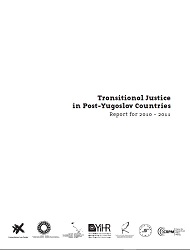
Investigations prepared and initiated by the Office of the War Crimes Prosecutor of the Republic of Serbia (OWCP) last a long time, and in a significant number of cases, do not result in indictments. The OWCP undertook preliminary actions in the case of mass crimes committed in the Dubrava Penitentiary in 2008; however, by the end of 2011, it still had not started an investigation. With regard to the criminal complaint filed by the HLC against the Commander of the Tenth Anti-Sabotage Detachment of the Republic of Srpska Army, Milorad Pelemiš, dating from August 2010, the OWCP publicly announced the initiation of criminal proceedings, but this still had not happened by the end of 2011. // During the year 2011, the OWCP indicted only nine persons, and only one of these indictments (charging three persons) is filed in a new case, while the indictments against six of the other persons emerged from earlier proceedings held before the Higher Court in Belgrade War Crimes Department. In cases of war crimes committed in Kosovo, the OWCP often files indictments on the basis of partial investigations, as happened in the Suva Reka/Suhareke and Ćuška/Qushk Cases...
More...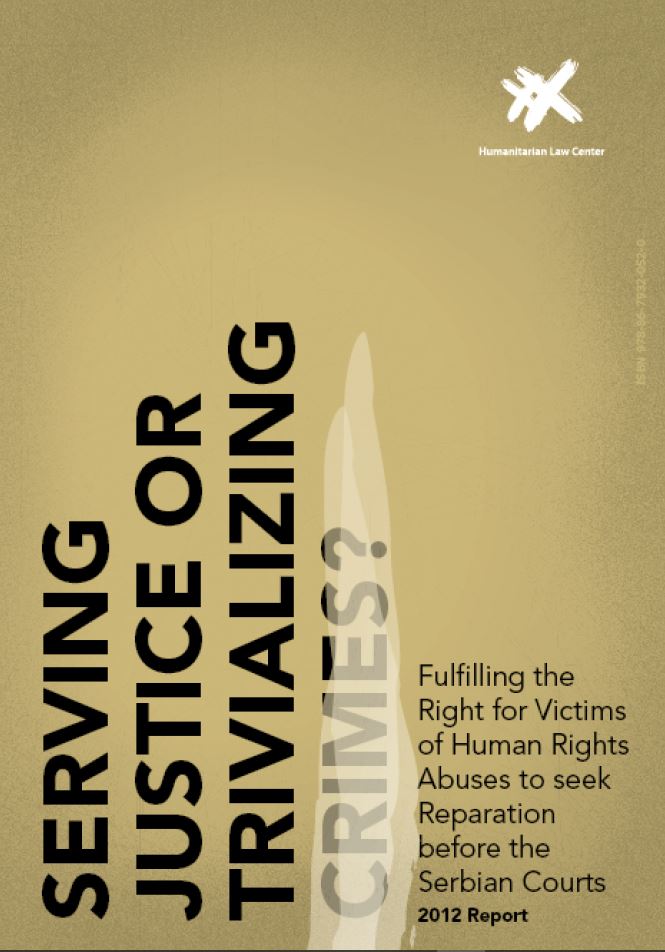
The obligation of the State to provide adequate financial redress to victims of human rights abuses is defined in numerous international conventions on human rights and is derived from the fundamental legal principle of accepting responsibility for harm done. In most societies that have gone through periods of massive human rights violations, the issue of financial reparations for victims is one of the most important elements of establishing the rule of law and providing justice for crimes committed in the past. Identification of victims, creation of programs suitable for the needs of victims, and ways in which those programs are financed are just a few of the important issues considered by post-conflict societies in their overall effort to provide reparations to victims of human rights violations. // This Report offers a review of 15 cases in which HLC represented victims and which resulted in court decisions in 2012. There were a total of 18 judgments, 12 of which were negative and six positive, which awarded a total of RSD 1.76 million to victims of human rights abuses.
More...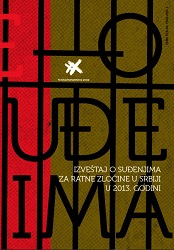
In 2013, 12 proceedings were conducted before the War Crimes Chamber of the High Court in Belgrade (High Court Division). First instance verdicts were passed in seven cases, finding 13 people guilty and one person acquitted. One verdict relates to the acceptance of the Agreement on the Recognition of the Criminal Offense of War Crimes against Civilians between the Defendant and the War Crimes Prosecutor's Office (TRZ). In five cases, the first-instance procedure was not completed by the end of 2013. // In 2013, two war crimes trials were conducted before the courts of general jurisdiction - the Orahovac / Rahovec case before the Požarevac High Court, in which a first instance verdict was rendered, and the Kushnin / Kushnin case, which is on appeal. before the Court of Appeals in Nis. The proceedings against Miloš Lukić are underway before the higher court in Prokuplje for the criminal offense of murder, which according to the characteristics of the case is a war crime against the civilian population.
More...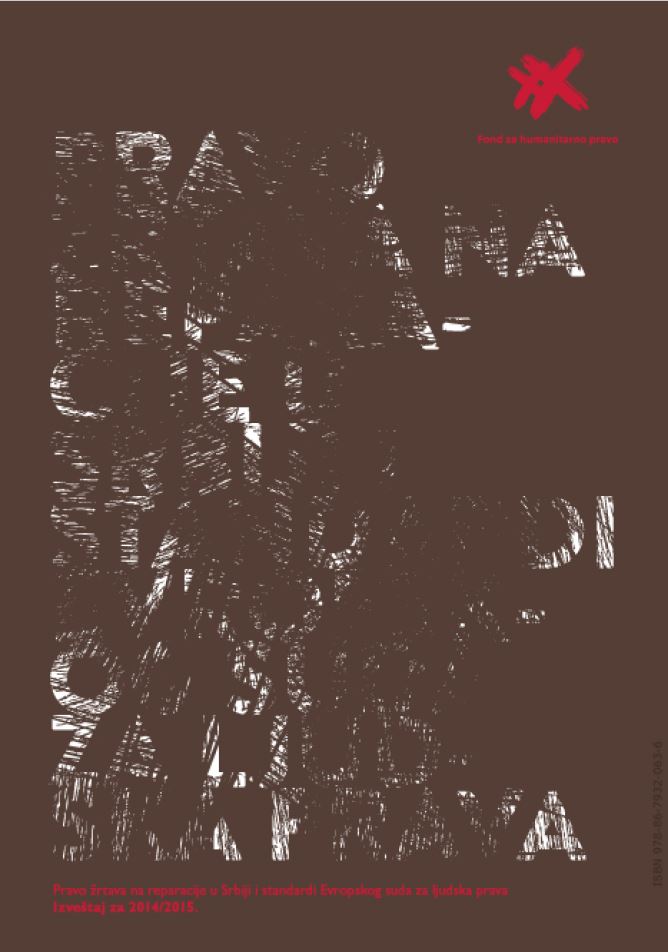
For societies that have gone through periods of human rights mass violations, the issue of reparations to victims is one of the most important elements in establishing the rule of law in relation to crimes committed, as well as building solidarity and a culture of human rights. The report provides an overview of legal norms relevant to the exercise of the right to reparations and their application in practice before courts and administrative bodies in Serbia, as well as their analysis in the light of the standards of the European Court of Human Rights. The key finding of the report is that judicial and administrative bodies in Serbia violate the right of victims to reparations and that the decisions of these bodies in reparation proceedings violate the rights guaranteed by the European Convention on Human Rights, especially the prohibition of torture, degrading treatment and humiliation. the right to a fair trial and non-discrimination. The disrespect of the European Convention on Human Rights by the judicial and administrative authorities in Serbia, when it comes to victims of serious human rights violations, makes their right to reparations in Serbia in practice impossible and almost illusory.
More...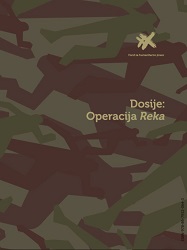
On 27 and 28 April 1999, a large-scale joint operation by the Yugoslav Army (VJ) and the Ministry of the Interior (MUP) called »Operation Reka« was conducted in villages west of the town of Gjakova in Kosovo. During the operation, Serb forces killed at least 350 Kosovo Albanian civilians and expelled several thousand to Albania. The bodies of 309 killed were found in 2001 in secret mass graves on the outskirts of Belgrade. The attack by Serb forces on the civilian population in the Reka Valley is the most serious crime committed against civilians during the Kosovo war and one of the largest in the wars in the former Yugoslavia in the 1990s. The dossier points in more detail to the evidence on the role of Momir Stojanović, the current member of the National Assembly of the Republic of Serbia and the chairman of the parliamentary Committee for the Control of Security Services, in Operation Reka. In March 2015, Interpol issued a warrant for Stojanović and 16 other people, at the request of the United Nations Interim Administration Mission in Kosovo (UNMIK), for crimes committed in this operation.
More...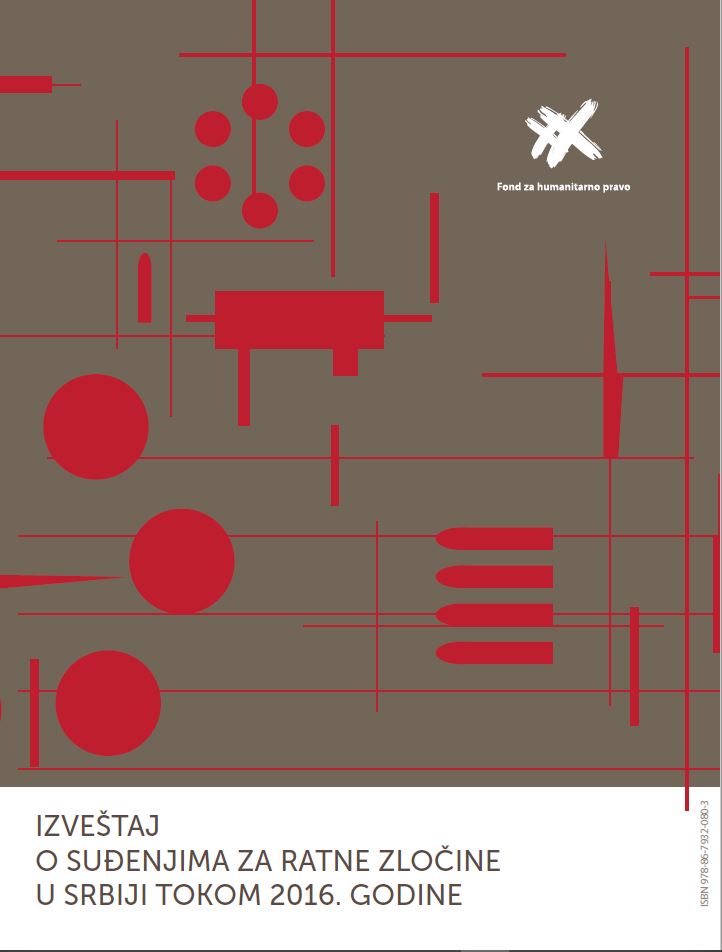
This is the sixth report of the Humanitarian Law Center (HLC) on war crimes trials in Serbia. During 2016, the HLC legal team monitored all war crimes trials conducted on the territory of Serbia, ie a total of 26 cases before the war crimes departments of the Higher and Appellate Courts in Belgrade, as well as before courts of general jurisdiction. Also, during the reporting period, HLC lawyers represented the victims in four cases before the War Crimes Chamber of the High Court in Belgrade, as well as in two appeal proceedings before the War Crimes Chamber of the Court of Appeals in Belgrade. The report pays key attention to the work of the Prosecutor's Office and courts in public parts of court proceedings, and above all to the analysis of indictments and verdicts in individual cases. The work of other bodies involved in the processing of war crimes (War Crimes Investigation Service of the Ministry of the Interior of Serbia, Protection Unit, etc.) cannot be analyzed at the level of individual cases, because there is no publicly available data.
More...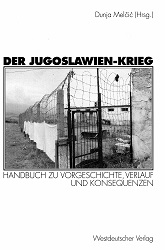
This book might be the most comprehensive collection of texts by numerous authors analysing the wars of the 1990s in former Yugoslavia. It has been developed and edited as a priject of the »East/West-Eurpopean Cultural Center PALAIS JALTA« in Frankfurt //During the 1990s, Milošević's wars covered almost all parts of the disintegrating and already disintegrated Yugoslavia. After the abolition of the autonomy of Kosovo and Vojvodina, the first scene was Slovenia, followed by Croatia, Bosnia-Herzegovina and finally Kosovo again. The handbook, published on behalf of the Frankfurt East-West European Cultural and Study Center "Palais Jalta", is both a reference work and an informative reading book on all aspects of the wars in Yugoslavia. Through its historically thoroughly researched chapters on all the peoples of the former Yugoslavia, the work reveals in encyclopedic essays the long history (from the history of the peoples and states to the founding of the first Yugoslavia in 1918, through its downfall in the Second World War to the Titoist re-foundation) as well as the political, religious and cultural context of this catastrophe. Finally, the profound consequences, e.g. for the world of states and international law, are formulated. The handbook is rounded off with a chronology, a glossary and detailed bibliographical appendices. This concept makes the handbook an indispensable standard work for all those interested in politics who are looking for thorough, serious and comprehensive information on the background to the conflict. The book is also a reliable reference work for scientists, students, journalists and all those who work with refugees and other people affected by the war - in schools, social work or the judiciary. The publication of the volume by the Frankfurt philosopher and publicist Dunja Melcic was accompanied by an advisory board with lecturers in south-eastern European history from various European universities. The authors are experts from all countries of the former Yugoslavia, from Germany, Great Britain, Austria, France, Switzerland and the USA.
More...
22.1. The start 22.2. How to Secure State Borders 22.3. The War for New Borders and the UN in Croatia 22.4. Greater Serbian expansion in Bosnia-Herzegovina 22.5. Resistance, side wars and NATO intervention
More...
23.1. Serbian war aims, strategies and operations 23.2. War aims, strategies and operations of the other actors 23.3. The Kosovo conflict until the end of 1998
More...
24.1. The war in Croatia 24.2. Bosnia-Herzegovina 24.3. Conclusions
More...
26.1. Civic versus Ethnic Loyalty 26.2. The Prelude to the Bosniak-Croat Conflict 26.3. Croatia's goals in Bosnia-Herzegovina 26.4. Unequal defense of the country and apple of discord Mostar 26.5. The devastating year 1993 26.6. Before and after the Washington Agreement 26.7. From the EU administration for Mostar to Dayton to the difficult peace
More...
In the reporting period, the War Crimes Department of the Higher Court in Belgrade handed down first-instance judgments in eight cases.1 The War Crimes Department of the Court of Appeal in Belgrade handed down four judgments and one ruling, two of the judgments and the ruling being on appeals lodged against judgments of the Higher Court in Belgrade,2 and the two other judgments on appeals against judgments of the Court of Appeal in Belgrade in proceedings in which the Department decided at third instance.3 Over the reporting period, the OWCP filed three indictments gainst three individuals.
More...
Twenty-nine years after the end of the armed conflict, the war continues to be the foundation of the Republic of Croatia. The Croatian authorities have therefore paid excessive attention to the commemoration of 1991, which is remembered in Croatia as a year of resistance to the "Greater Serbian aggression". Apart from the fact that this continues to maintain the dominant narrative, according to which Croatia and Croats are the victims and winners of the war, such a culture of memory promotes and establishes nationalist policies and power relations with ethnic "others", i.e. minority Serb communities in Croatia. Aside from memory policies, the education system in general does not offer a different narrative in the history textbooks and school visits to war-related locations that are incorporated into the curriculum. At the same time, peace initiatives do not occupy an important place in the politics of memory. Integrating the memory of peace initiatives at the higher state level would help create a society that has overcome divisions concerning the past without suppression of information, and would help overcome occasional interethnic tensions in Croatia and the region.
More...